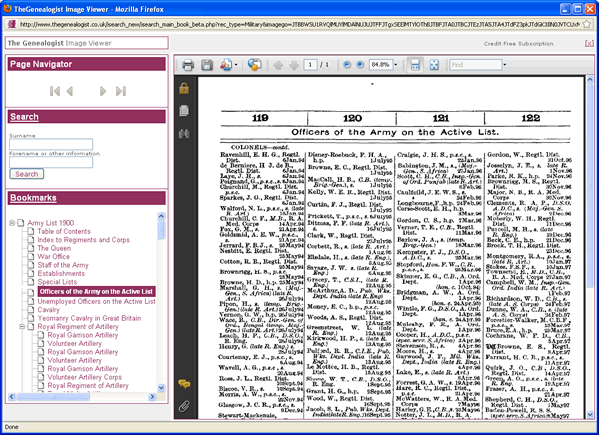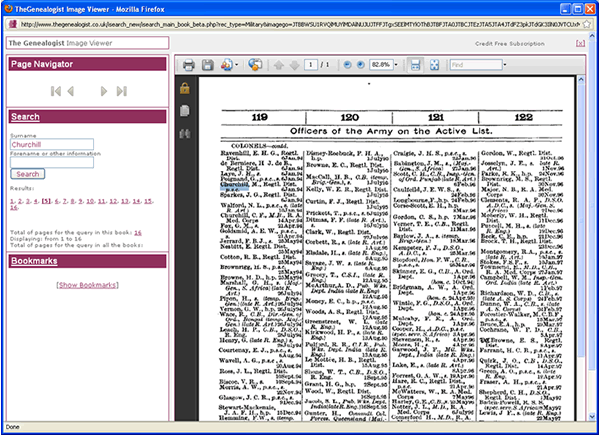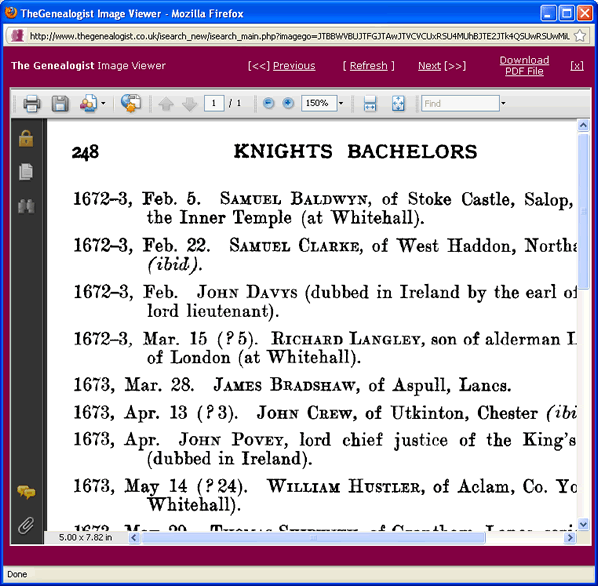
Family Tree
Family Tree Magazine is a leading family history magazine published by ABM. Available from all good newsagents. Click here to subscribe.Centuries of Soldiers & Sailors
Through the centuries many of our ancestors have served in the armed forces, fighting in wars and policing the British Empire. Mike Ratcliff explores the military records that are available on TheGenealogist.co.uk, which will help you learn more about the soldiers and sailors on your family tree.
Individuals or entire families that vanish from the census and other records are a problem for all genealogists. Emigration to a brighter future in distant lands held a lot of appeal, but for many people it was the needs of the armed forces to fight wars and police the British Empire that took the men from our shores. Whether in the British Isles or overseas, military records can provide useful information about your ancestor's life and work.
TheGenealogist.co.uk has military records that span many centuries. There is the Knights of England, which dates from 1127 to 1904, while the latest additions to the site are the Army and Navy Lists. The oldest lists for the Army start from 1661, while those for the Navy start from 1822. The compilers of these Army and Navy Lists concentrated on commissioned officers.
Army & Navy Lists
As well as Army officers, the Army Lists sometimes include civilian administrators in India and beyond, as well as medical and veterinary officers, yeomanry cavalry and militia, so if your ancestors reached the dizzy heights of officer status, you can find a lot of information about their careers. There will be their name, regiment, date of commission, and date of retirement too.
During the First World War, the number of officers in the British Army rose from 15,000 to 235,000 and during this war, the list was sometimes published on a monthly basis.
The Navy List has been published since 1822 annually. The details you can glean about a naval ancestor include: surnames, forenames or initials, rank, decorations and the ship (or other establishment) in which the officer was serving.
An entire volume of an Army or Navy List can be searched by surname and other information in the viewer and the matches are shown as a series of clickable links. As you try each link, the corresponding page opens with the required text highlighted so you can quickly see whether it's your ancestor before moving onto the next possible match. Even if your relative may have already left the Army, it's worth a quick search as there is a section for retired officers, listed rather cruelly as Non-Effective Officers, giving names, regiments and leaving dates.
While it is easy to search the records, browsing the Army and Navy Lists on TheGenealogist is fascinating too. Looking down the navigation tree of bookmarks shows a list of all officers on the active list, an index of the Army's regiments and the officers serving in each one, and overseas regiments such as the British Central Africa Rifles. Switch to Indian Army Departments and you'll find not only the high-ranking civil servants but the school teachers and Superintending clerks that kept the empire ticking over.
Knights of England
The Knights of England may have originally involved suits of armour and galloping chargers, but evolved into honours bestowed for services to the country or monarch. The Knights of England, which gives a roll for more than seven centuries of knights, covers all the order of chivalry in England, Ireland and Scotland.
Initially, knights were those required to serve their lord in a military capacity when called upon, but with the decline of feudal society, the role of the king waned, and the conferring of a knighthood became a symbolic honour.
There were several orders of knighthood, some of which are very well-known, such as the Knights of the Garter, the Knights of the Bath, the Knights of St Patrick, the Knights of the Thistle, and the Knights Bachelor.
Rolls of Honour
To find further military records on TheGenealogist, view the Rolls of Honour (listed above 'Military Records' on the site's main menu).
The Rolls of Honour cover the First and Second World Wars, with key Army publications such as De Ruvigny's Roll of Honour 1914-1918, and the Bond of Sacrifice volumes 1 and 2, and the National Roll of the Great War 1914-1918.
There are also naval rolls such as the Chatham, Plymouth and Portsmouth Memorial Register 1914-1921, and Naval War Deaths 1914-1921, and Naval Ratings Deaths 1939-1948. There are other Army, Navy and Royal Air Force deaths for World War II, and the Victoria Cross and Distinguished Service Order Roll for 1857 to 1923.
How to search the Army & Navy Lists

Select Military Records from the home page, and then select 'Military Records - New' from the drop-down menu, to be taken to the Army and Navy Lists. The list that displays shows 10-year spans, between 1660 and 1950. Either select a decade of interest, or click on the 'View all books in this series' link. Viewing the books displays a full list of the volumes available.

Your selected book opens in the viewer with the bookmarks pane offering a list of sections that can be accessed directly with a mouse click. Sections with + or - signs adjacent can be expanded or collapsed to reveal sub-sections or hide unwanted details and make navigation easier. Within your chosen chapter you can move forward and back with the Page Navigator buttons while using the icons above the viewed page to print, save or change the zoom.
Apart from manually browsing a book you can use the viewer's Search facility to scan the entire volume in seconds. With an unusual family name it's often sufficient to just enter a surname, but if this gives too many hits try adding a forename or other information. The matches are shown as a series of clickable links that take you straight to the relevant age with the text highlighted in blue so you can quickly locate it. An additional panel opens listing the matches on that page, which is especially useful to move between multiple matches on the same page.

With the Knights of England 1127-1904 the entire records are searched from a single box where you enter the keywords in order of importance. This creates a list showing the matching text, volume and page details of each one and links to view the pages. If you fail to find your ancestor on a page you need to return to the list and open another link - there is no way to jump from one match directly to the next (selecting 'next' will display the next page).

TreeView
With your new-found facts about your family, you may want to create an online family tree. If so, head for the TreeView tab at TheGenealogist.co.uk. To start a new tree you may either enter data for your first family group manually or upload a GEDCOM file.
The comprehensive TreeView tools enable you to build a complete tree with sources, notes, pictures and events to view as a chart or family group. As your tree is online, you can log in on any computer connected to the Internet to view and edit your tree, as well as knowing you have a secure copy if your own computer fails. Others can also view your tree (either by you inviting specific individuals of if you make it public).
Being part of a genealogy website means you are not creating an isolated family tree, but one that integrates with a vast collection of records. The system automatically checks for possible links from your tree to its database and offers a list of likely resources and people for you to check. When you find family members the relevant pages can be saved to your research log and linked to individuals in your TreeView file to create a complete record of your researches.
CDs of military interest are available from www.genealogysupplies.com, including a wide range of resources such as the Dorset Absent Voters' List 1918-1919, and The Dambusters 1943.